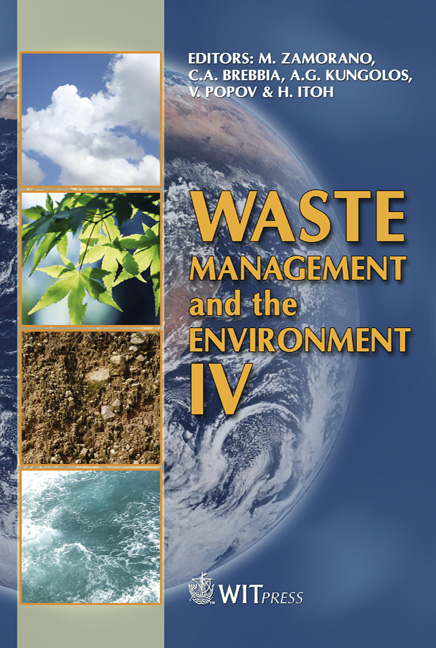Evaluating The Thermal Stability And Sorption Capacity Of Several Compost Chars
Price
Free (open access)
Transaction
Volume
109
Pages
9
Page Range
233 - 241
Published
2008
Size
334 kb
Paper DOI
10.2495/WM080251
Copyright
WIT Press
Author(s)
L. Tsui, Y. C. Chao, M. A. Juang & Y. T. Chung
Abstract
The chemical composition of compost is much closer to coal when compared with that of agricultural wastes. Since most activated carbon is currently manufactured from coal, it might be easier to produce activated carbon from compost than from other agricultural wastes. In this study, several compost samples were compared for their thermal stability. In addition, sugarcane bagasse samples with three maturities, i.e. 0-month, 1-month, and 6-month, were pyrolyzed to produce carbon chars. The experimental results showed that the thermal stability increased with compost maturity, and thus the highest carbon char yield was obtained from the 6-month compost sample. The analysis of chemical composition showed that the 6-month compost had the highest C/H and C/O ratios, suggesting it has the greatest hydrophobicity among the three bagasse samples. However, due to its high ash content, the 6-month compost char had less sorption capacity for phenol when compared with other two bagasse chars. Nevertheless, the 6-month compost char had comparable sorption capacity for hydrophobic pollutant naphthalene. The results implied that there might be some advantages of producing compost char as adsorbent for removing hydrophobic pollutants from solution, although more work to enhance the carbon content in the char may still be needed in order to manufacture high quality adsorbent from compost. Keywords: compost char, thermal stability, hydrophobicity, sorption, phenol, naphthalene. 1 Introduction Activated carbons (AC) are one of the most often used adsorbents for controlling environmental pollutants, and they are generally produced from coal. However,
Keywords
compost char, thermal stability, hydrophobicity, sorption, phenol, naphthalene.





